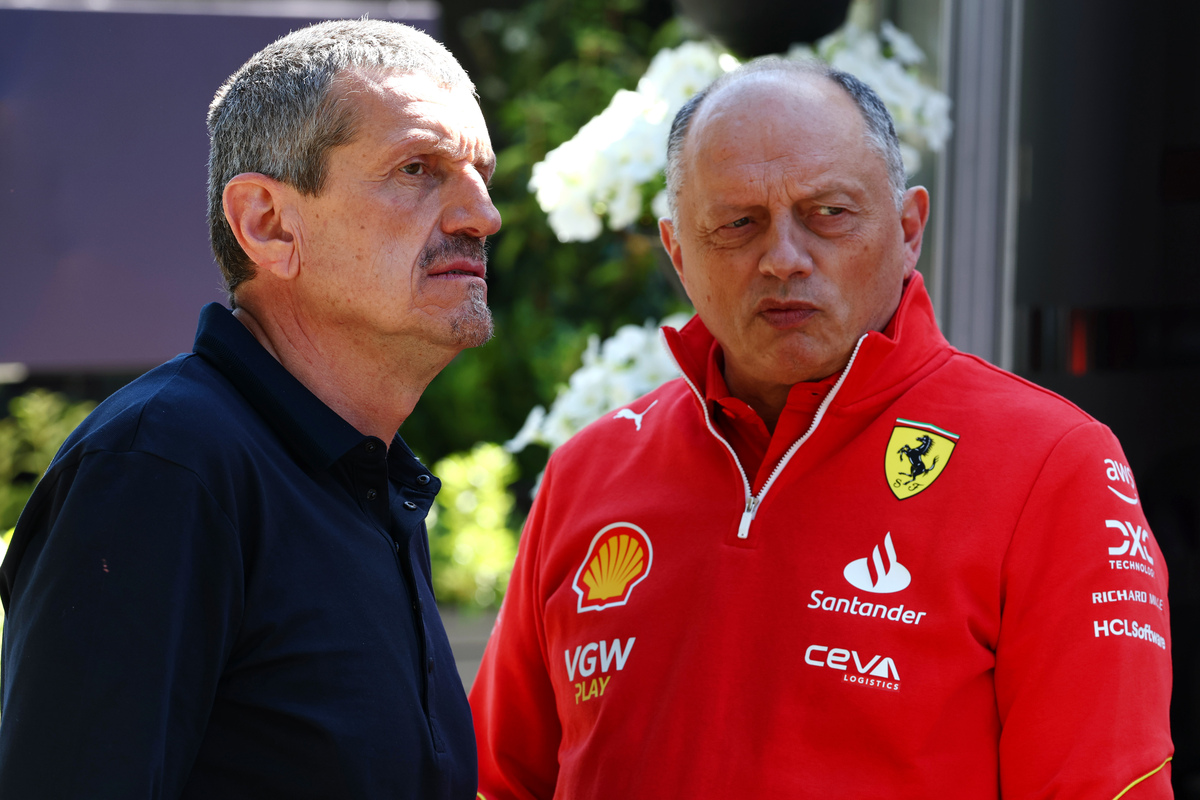

The former Haas team principal, Steiner parted ways with the American-registered operation at the end of 2023.
The Italian remained active within the sport, working as a television pundit with several broadcasters, including Channel 10 over the Australian Grand Prix weekend.
However, Steiner is pursuing opportunities to make his F1 return by buying into an existing team.
It’s understood he has secured funding that would enable him to acquire a stake in a team but a bullish market makes such an investment difficult to realise.
Suggestions had linked him to a deal to purchase RB, though Steiner has denied speaking with Red Bull about such a deal when approached by Speedcafe.
RB has been reimagined for 2024 with a new identity, purpose, and commercial backing for the first time since it was acquired by Red Bull in 2006.
Beyond the Italian team, six of the nine others can be easily eliminated as potential targets.
Ferrari, Mercedes, Red Bull Racing, and Sauber are all accounted for. They are all effectively manufacturer operations with committed owners.
Aston Martin also has comparatively new owners who have demonstrated their commitment to driving the team forward, with a new factory and a host of other facilities on the way.
In addition to those five, acquiring Haas is unrealistic.
Steiner’s former team has an unusual business model with its raison d’etre to effectively exist and compete more than challenge for wins and world championships.
It has a scattered structure with a presence in at least four locations across three countries and has a heavy reliance on Ferrari.
“I’m not interested in running a team on the same premise as Haas,” Steiner recently stated.
“I’ve spent so many years in F1 that I want to do more than just participate and score points every once in a while. I want to really compete and try to win. I’m not going to come back just to run the team if I don’t have the opportunity.”
That leaves just three viable options: Alpine, Williams, and McLaren.
McLaren is a curious case as it’s an organisation that comes with more than just a racing operation.
The current majority shareholders of McLaren Group, Bahraini sovereign wealth fund Mumtalakat, is understood to be keen on selling the road car business but maintaining the F1 team.
McLaren Group sits across both companies, with a 70 percent stake in McLaren Racing, the division which includes Formula 1, IndyCar, Extreme E, and Formula E.
The road car business has struggled in recent years, with claims it has had more than $3 billion invested under Mumtalakat’s ownership – with more than $500 million in little more than the last year.
Acquiring McLaren would, therefore, require both an appetite to sell the more financially successful and secure arm of the business while restructuring the Group to accommodate the move.
That’s not impossible but there is no incentive for the current owners to explore that avenue beyond their own interests, which is the sale of the road car organisation.
Investment in Alpine or Williams is far simpler as, in both instances, the Formula 1 teams do not have the same structural complexities as McLaren.
Alpine is majority-owned by Renault, though it did take on investors last June when it shed a 24 percent equity share for €200 million.
That deal valued the team at USD $900 million, while the following month Forbes valued the organisation at $1.4 billion, making it the fifth most valuable team in the sport, ahead of Aston Martin.
Alpine has been rumoured to be on the market for some time, despite Bruno Famin’s denials.
A deal there would likely run a prospective investor somewhere to the tune of USD $1.1 billion for a 76 percent stake.
The only other realistic option seems to be Williams.
Owned by Dorilton Capital, which acquired it in August 2020 for a reported USD $200 million, it is now worth an estimated $725 million according to Forbes.
There is much to be done at Grove, a process currently being led by James Vowles, whose task is to catch up for decades of under-investment.
That process will require some not insignificant further investment, some of which will be covered by the F1 cost cap, but other aspects will fall outside of it.
Of the three operations it is hypothetically the simplest to acquire but requires the most work to make it competitive.
Conversely, Alpine is attractive because much of the infrastructure is there, with personnel and structure the apparent weakness for the moment.
New investment could stimulate renewed interest in the team on the employment market to help drive it forward, but that relies on Renault wanting to step its exposure back to that of simply a power unit supplier in future.
In each instance, a deal is far from simple as the sport enjoys a boom in popularity.
That has seen the value of teams skyrocket, and they continue to do so, making now an unwise time to sell for financially savvy owners.
Conversely, now is the time to buy as the market looks set to continue to rise. While returns can’t be maximised as they were when Dorilton bought in, there are opportunities to increase value.
Therein lies the complication for Steiner and his F1 return, not to mention his investor. While there is an eagerness to invest, finding an opportunity is incredibly difficult in such a bullish market.






















Discussion about this post